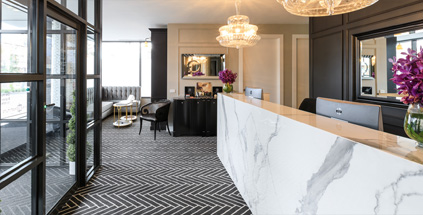Following renewed media interest regarding the correlation between breast implants and an increased risk of developing Non-Hodgkin’s Lymphoma Mr Mutimer thought the timing pertinent to outline key information related to BIA-ALCL.
The following information has been sourced from the Australasian Society of Aesthetic Plastic Surgeon’s website and summarises what we know to date:
FACTS ASSOCIATED WITH BIA-ALCL
- It is a cancer of lymphatic cells and a form of Non-Hodgkin’s Lymphoma.
- It is not a breast cancer.
- It occurs in association with breast implants and to date exclusively with exposure to textured implants (i.e. No case has been reported with exposure to smooth implants alone).
- It occurs in women who have had implants for both cosmetic and reconstructive indications.
- It takes an average of 7-10 years after implant insertion before it develops.
- The commonest presentation is a fluid swelling around the breast implant and in the space between the implant and breast implant capsule – late seroma. The diagnosis of the condition is made by examination of the seroma fluid.
- Early stage disease is curative with surgery alone.
- Disease which has spread through the capsule, forming a mass or which has spread to local lymph glands carries a worse prognosis.
RISK
The most accurate assessment of risk published to date is from a detailed study of numerator and denominator in Australia and New Zealand. This showed that the risk for implants with high surface area texture (biocell, Alllergan and polyurethane, Silimed) were around 10 times higher (1 in 4,000 to 1 in 7,000) compared with implants with lower surface area texture (1 in 60000 for siltex Mentor). The risk was calculated only for companies that complied with a request for provision of sales data.
We did see ALCL arising from other implant manufacturers, but were not able to calculate risk due to their refusal to supply data for analysis.
The study also identified clusters of multiple cases arising from the same practice. These clusters are currently under investigation, with the consent of the centre and/or surgeon, and there is insufficient evidence presentlyto comment as to likely causative factors.
CAUSATION
Recent media stories suggested that there is a link with cut-price providers. No such link that has been established to date by analysis of the evidence.
A unifying theory was proposed by the ANZ epidemiology paper and has become widely accepted worldwide as the best explanation for factors that cause BIA-ALCL.
The unifying theory cites four inter-related factors:
- Textured implants (with a higher risk for high surface area textures)
- Bacterial contamination at the time of surgery to reach a threshold to cause inflammation
- Patient genetic predisposition
- Time – for the process to develop.
Bacteria have been identified in association with these tumours, similar to the association between gastric lymphoma and Helicobacter pylori.
I’VE HAD BREAST IMPLANTS OR AM CONSIDERING SURGERY – WHAT SHOULD I DO NEXT?
If you currently have breast implants and are concerned you should consult with a Specialist Plastic Surgeon who will determine what type of implants you have and address your concerns.
Similarly if you are considering breast implant surgery it is important to schedule a consultation with a Specialist Plastic Surgeon to discuss the risks and benefits, including the risk of BIA-ALCL. There are different types of implants available and selection needs to take into account the risks and benefits of specific choices.
For more information or to book a Consultation with Mr Keith Mutimer – Specialist Plastic Surgeon phone 03 9592 0522 or submit a confidential enquiry via our website.








